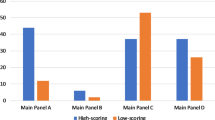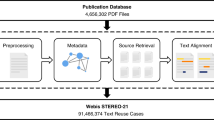Abstract
Writing is a vital component of a modern career in scientific research. But how to write correctly and effectively is often not included in the training that young astronomers receive from their supervisors and departments. We offer a step-by-step guide to tackle this deficiency, published as a set of two Perspectives. In the first, we addressed how to plan and outline your paper and decide where to publish. In this second Perspective, we describe the various sections that constitute a typical research paper in astronomy, sharing best practice for the most efficient use of each of them. We also discuss a selection of issues that often cause trouble for writers from sentence to paragraph structure—the ‘writing mechanics’ used to develop a manuscript. Our two-part guide is aimed primarily at MSc- and PhD-level students who face the daunting task of writing their first scientific paper, but more senior researchers or writing instructors may well find the ideas presented here useful.
This is a preview of subscription content, access via your institution
Access options
Access Nature and 54 other Nature Portfolio journals
Get Nature+, our best-value online-access subscription
$29.99 / 30 days
cancel any time
Subscribe to this journal
Receive 12 digital issues and online access to articles
$119.00 per year
only $9.92 per issue
Buy this article
- Purchase on Springer Link
- Instant access to full article PDF
Prices may be subject to local taxes which are calculated during checkout
Similar content being viewed by others
References
Chamba, N., Knapen, J. H. & Black, D. How to plan your astronomy research paper in ten steps. Nat. Astron. https://doi.org/10.1038/s41550-022-01757-1 (2022).
Bertout, C. & Schneider, P. Introducing structured abstracts for A&A articles. Astron. Astrophys. 441, E3–E3 (2005).
Sterken, C. Writing a Scientific Paper II. Communication by Graphics. In Scientific Writing for Young Astronomers Vol. 50, 65–170 (EAS, 2011).
Chen, T. X. et al. Best practices for data publication in the astronomical literature. Astrophys. J. Supp. Ser. 260, 5 (2022).
Peterken, T. et al. Time-slicing spiral galaxies with SDSS-IV MaNGA. Mon. Not. R. Astron. Soc. 489, 1338–1343 (2019).
Akhlaghi, M., Infante-Sainz, R., Roukema, B. F., Valls-Gabaud, D. & Gallé, R. B. Towards long-term and archivable reproducibility. Comput. Sci. Eng. 23, 82–91 (2021).
Kuttel, M. M. No expiration date. Nat. Astron. https://doi.org/10.1038/s41550-021-01402-3 (2021).
Dryer, M. S. in The World Atlas of Language Structures Online (eds Dryer, M. S. & Haspelmath, M.) Ch. 37 (Max Planck Institute for Evolutionary Anthropology, 2013); https://wals.info/chapter/37
Acknowledgements
We thank S. Comerón, S. Díaz-García, E. Knapen Almeida and L. Knapen Almeida, C. Martínez-Lombilla, R. Schödel and A. Watkins for comments on an earlier version of these notes. N.C. also thanks T. E. Rivera-Thorsen, M. Pompermaier and C. Usher for interesting discussions. Part of this Perspective is based on a scientific writing course delivered by J.H.K. to mostly MSc and PhD students in Ethiopia and Rwanda. He thanks M. Pović and P. Nkundabakura for organizing those courses, and the students for participating. J.H.K. acknowledges financial support from the State Research Agency (AEI-MCINN) of the Spanish Ministry of Science and Innovation under the grant ‘The structure and evolution of galaxies and their central regions’ with reference PID2019-105602GB-I00/10.13039/501100011033, from the ACIISI, Consejería de Economía, Conocimiento y Empleo del Gobierno de Canarias and the European Regional Development Fund (ERDF) under grant number PROID2021010044 and from IAC project P/300724, financed by the Ministry of Science and Innovation through the State Budget and by the Canary Islands Department of Economy, Knowledge and Employment through the Regional Budget of the Autonomous Community. N.C. acknowledges support from the research project grant ‘Understanding the Dynamic Universe’ funded by the Knut and Alice Wallenberg Foundation under Dnr KAW 2018.0067.
Author information
Authors and Affiliations
Contributions
All authors developed the ideas in this manuscript together. J.H.K. is the primary author, D.B. wrote most of the ‘Writing mechanics for manuscript development’ section, and all authors contributed to editing the manuscript. The development of this guide was inspired by the scientific writing courses that D.B. has been giving for years at the University of Groningen and in 2019, as part of an initiative by N.C., at the Instituto de Astrofísica de Canarias, Tenerife, Spain.
Corresponding author
Ethics declarations
Competing interests
The authors declare no competing interests.
Additional information
Publisher’s note Springer Nature remains neutral with regard to jurisdictional claims in published maps and institutional affiliations.
Supplementary information
Supplementary information
Supplementary Discussion.
Rights and permissions
Springer Nature or its licensor holds exclusive rights to this article under a publishing agreement with the author(s) or other rightsholder(s); author self-archiving of the accepted manuscript version of this article is solely governed by the terms of such publishing agreement and applicable law.
About this article
Cite this article
Knapen, J.H., Chamba, N. & Black, D. How to write and develop your astronomy research paper. Nat Astron 6, 1021–1026 (2022). https://doi.org/10.1038/s41550-022-01759-z
Received:
Accepted:
Published:
Issue Date:
DOI: https://doi.org/10.1038/s41550-022-01759-z
This article is cited by
-
How to plan your astronomy research paper in ten steps
Nature Astronomy (2022)



